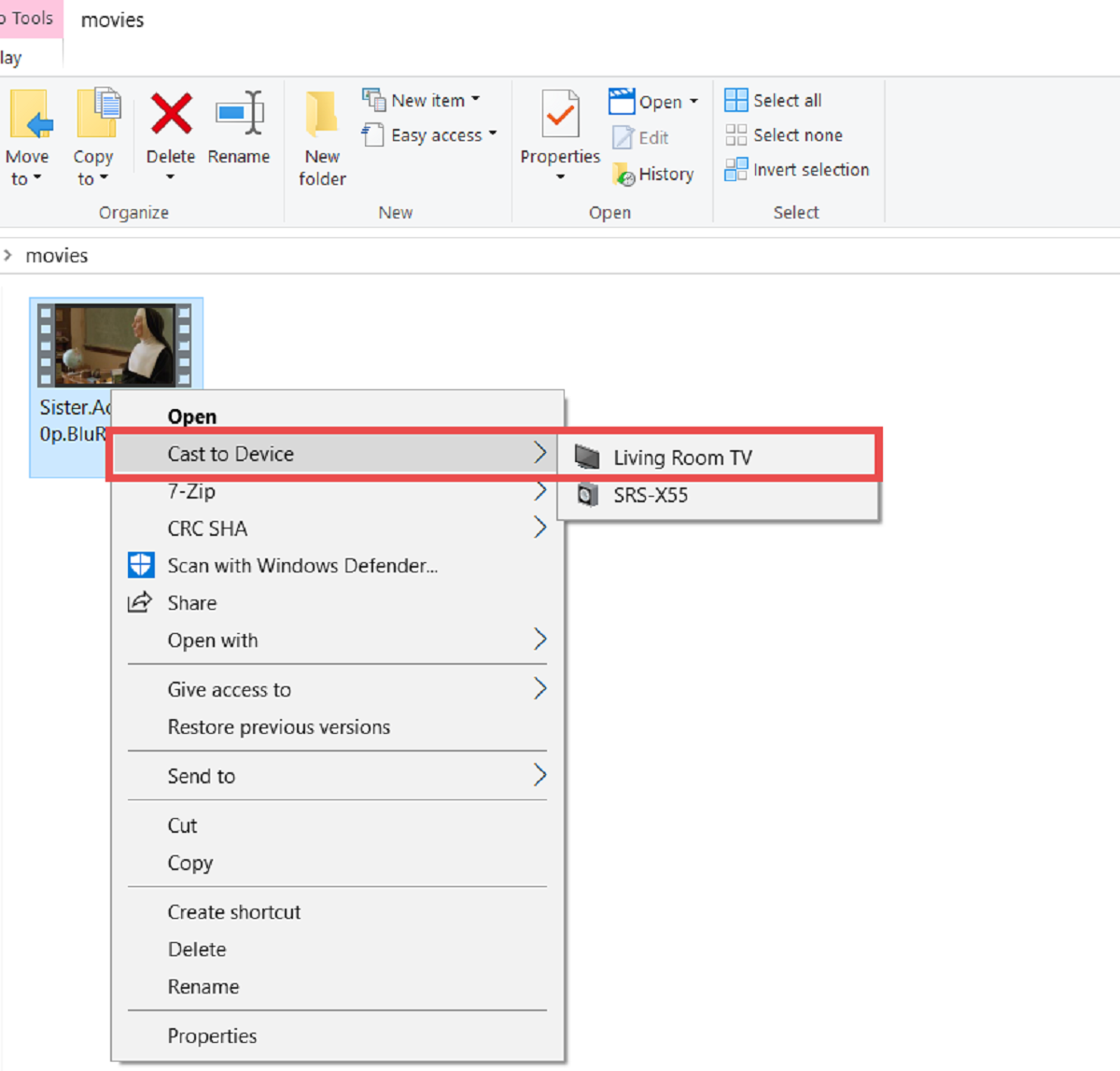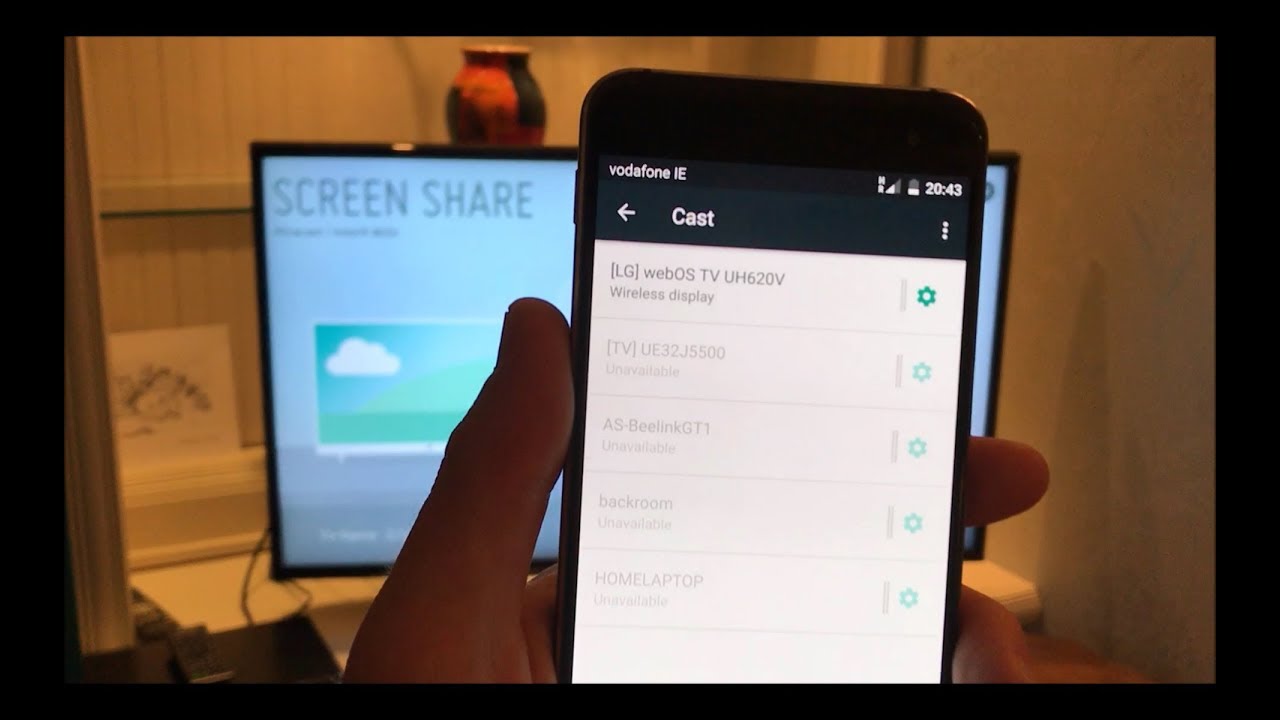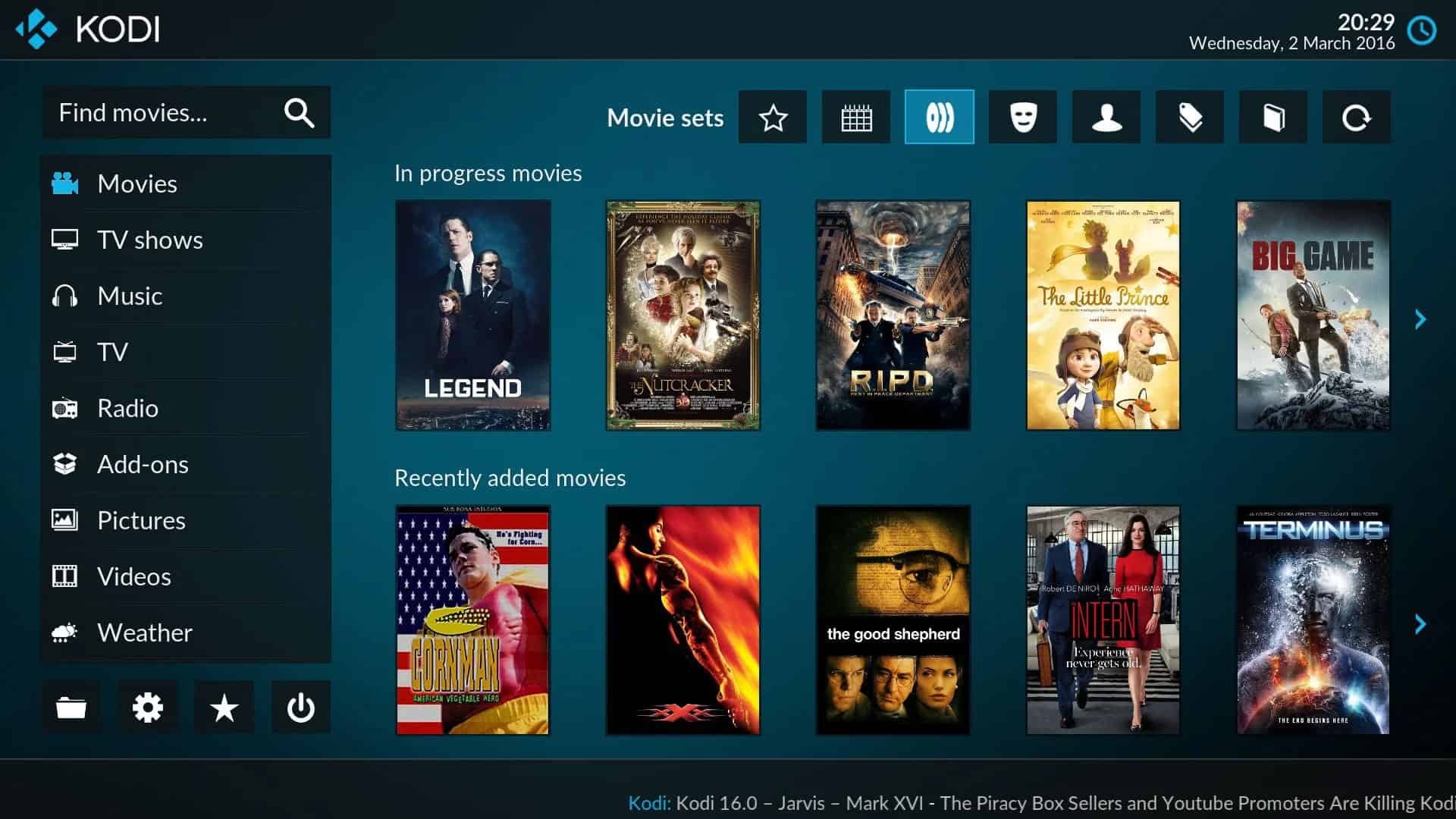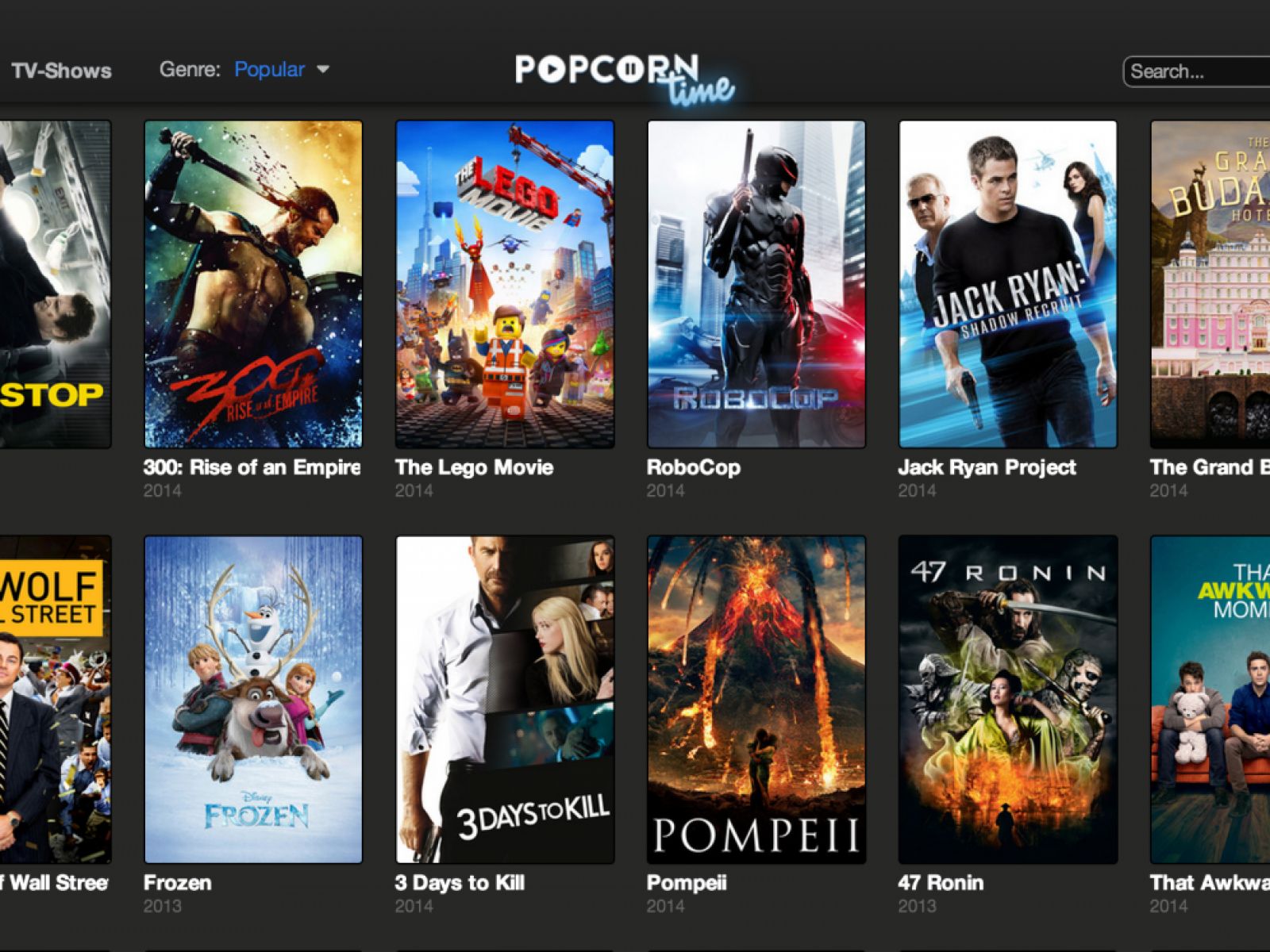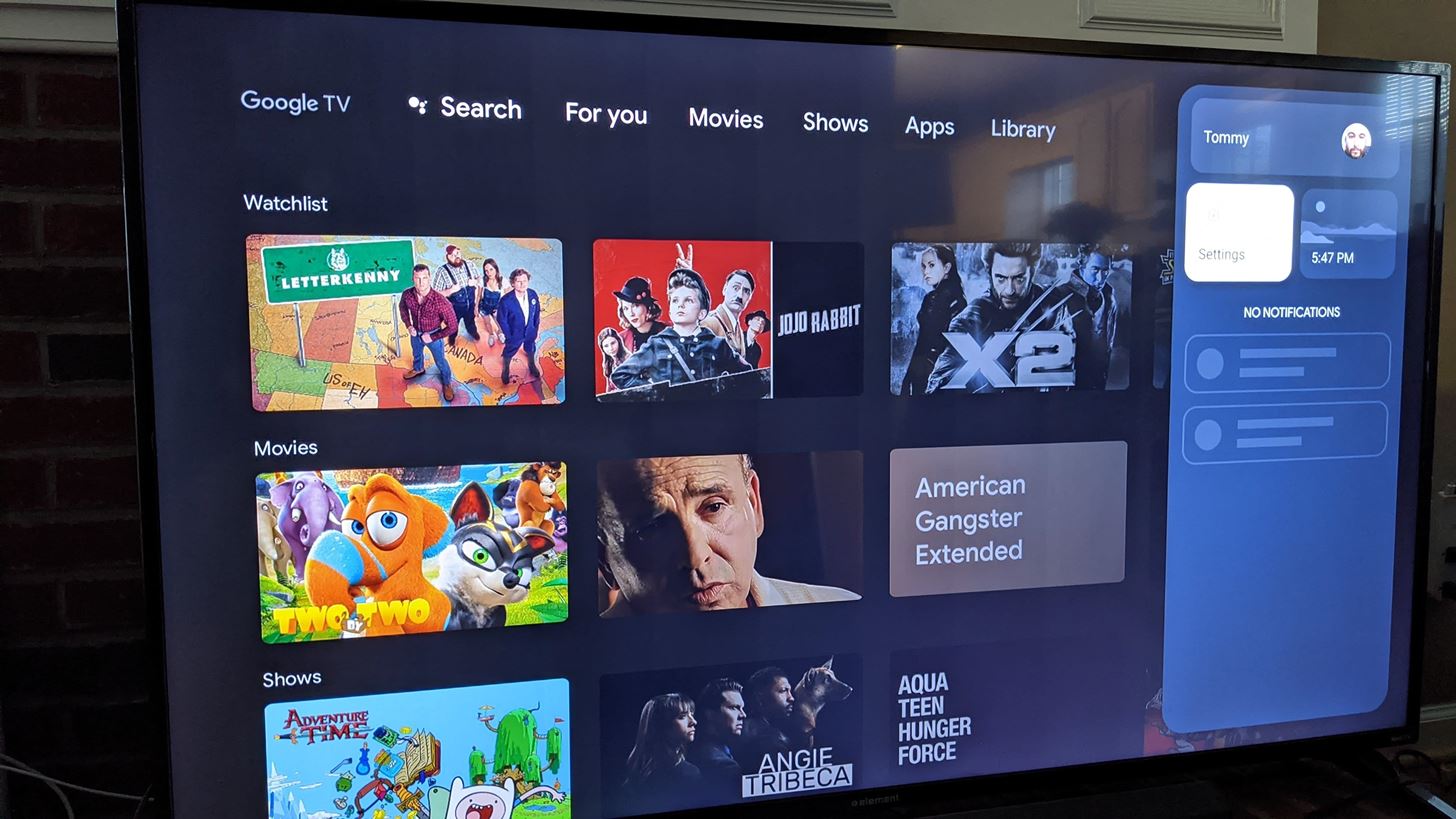Introduction
Casting your PC to a TV is an excellent way to enjoy your favorite content on a larger screen and turn your living room into an entertainment hub. Whether you want to watch movies, play games, or simply share a presentation with colleagues, casting your PC to a TV provides a seamless and immersive experience.
But what exactly is casting? Casting refers to the act of wirelessly streaming content from one device to another, allowing you to display content from your PC on a TV screen. This means you can mirror your PC’s screen, play media files, or even extend your desktop onto the TV for a multi-monitor setup.
The benefits of casting your PC to a TV are numerous. Firstly, it allows you to enjoy your content on a larger display, providing a more immersive and cinematic experience. Whether it’s watching movies, playing games, or browsing the internet, everything becomes more visually captivating when viewed on a TV rather than a small computer monitor.
Secondly, casting your PC to a TV enables you to share your content with others effortlessly. Whether you’re hosting a movie night with friends or giving a presentation at work, casting allows everyone to view the content simultaneously, eliminating the need for huddling around a small screen.
Additionally, casting your PC to a TV opens up a world of possibilities for entertainment. With a wide range of streaming services, online content, and gaming options, you can explore and enjoy a vast library of media on your TV. From streaming movies and shows to playing online games, the versatility offered by casting is truly remarkable.
In this guide, we will explore several methods on how to cast your PC to a TV, including using an HDMI cable, wireless adapters, streaming devices, Miracast, and Chromecast. We will also provide troubleshooting tips for common issues that may arise during the casting process. So, let’s dive in and discover the different ways to cast your PC to a TV!
What is Casting?
Casting is the process of wirelessly streaming content from one device, such as a PC, to another device, like a television. It allows you to display the screen of your PC on the TV, effectively turning your living room into a larger display for all your content needs. By casting, you can mirror your PC’s screen, play media files, or even extend your desktop onto the TV, creating a multi-monitor setup.
The concept of casting is made possible by advancements in wireless technology and connectivity options. Rather than relying on cables and physical connections, casting utilizes wireless protocols to transmit data from the PC to the TV. This means you can enjoy the convenience of wire-free streaming, eliminating the need for messy cables and restrictions on your mobility.
When you cast your PC to a TV, the TV acts as a secondary display for your computer. This allows you to easily share your content with others in a larger and more immersive visual format. Whether you want to show a presentation, watch a movie, or play a game, casting provides a seamless experience that brings your content to life on the big screen.
Casting is not limited to a specific type of TV or PC. It can be done with various TV models, including both Smart TVs and regular TVs, as long as they have the necessary connectivity options. As for the PC, it can be a desktop or laptop running on Windows, macOS, or even Linux.
One of the popular technologies used for casting is Miracast. Miracast is a wireless display standard that allows the direct streaming of content from a PC to a compatible TV or display device. It works by creating a direct Wi-Fi connection between the PC and the TV, ensuring a secure and reliable connection for streaming.
Another popular casting option is Chromecast, a device developed by Google. Chromecast is a small dongle that plugs into the HDMI port of the TV. With Chromecast, you can stream content from your PC, smartphone, or tablet directly to the TV, giving you the freedom to enjoy a wide range of apps, games, and media on the big screen.
In summary, casting is the process of wirelessly streaming content from a PC to a TV. It enables you to display your PC’s screen, play media files, and extend your desktop to a larger display. By utilizing wireless technology and protocols like Miracast or Chromecast, casting offers a convenient way to share and enjoy your content on the big screen.
Benefits of Casting PC to TV
Casting your PC to a TV offers several significant benefits that enhance your entertainment and productivity experience. Let’s explore some of these advantages:
- Enhanced Viewing Experience: One of the primary benefits of casting your PC to a TV is the ability to enjoy content on a larger screen. Whether you’re watching movies, playing games, or browsing the web, everything becomes more immersive and visually captivating on a TV compared to a computer monitor.
- Shared Entertainment: Casting your PC to a TV allows you to share your favorite movies, TV shows, and videos with others. Whether you’re hosting a movie night with friends or want to showcase a presentation at work, everyone can enjoy the content simultaneously on a larger screen, eliminating the need for crowding around a small monitor.
- Multi-Tasking Possibilities: Casting your PC to a TV opens up exciting multi-tasking options. You can extend your PC’s desktop to the TV, effectively creating a dual-monitor setup. This is especially beneficial for productivity tasks like video editing or working with multiple documents simultaneously.
- Access to Online Streaming: Casting your PC to a TV gives you access to a vast array of online streaming services, such as Netflix, Hulu, or YouTube. You can enjoy your favorite movies, TV shows, and videos on the big screen with ease, providing a cinematic experience right in your living room.
- Gaming on the Big Screen: Gamers can take advantage of casting technology to play their favorite PC games on a larger display. By casting to a TV, you can enjoy a more immersive gaming experience, with enhanced visuals and an expansive field of view.
- Ease of Content Sharing: Casting eliminates the need for physical media, such as DVDs or USB drives, to share content with others. With the ability to cast your PC’s screen to a TV, you can effortlessly share photos, videos, presentations, or any other content with friends, family, or colleagues.
- Wire-Free Convenience: Casting your PC to a TV provides the convenience of a wireless connection. This means you can enjoy the freedom of moving around without the hassle of cables. Whether you’re presenting in a conference room or lounging on your couch, casting allows you to control your PC’s content from a distance.
In summary, casting your PC to a TV offers a range of benefits. From an enhanced viewing experience to easier content sharing and multi-tasking possibilities, casting technology opens up new avenues for entertainment and productivity. By enjoying your favorite content on a larger screen, you can immerse yourself in the media and create memorable shared experiences with others.
Method 1: Using HDMI Cable
Using an HDMI cable is one of the simplest and most straightforward methods to cast your PC to a TV. HDMI stands for High-Definition Multimedia Interface and is a widely used standard for transmitting high-quality audio and video signals. Here’s how you can use an HDMI cable to cast your PC to a TV:
- Check the ports: Ensure that both your PC and TV have HDMI ports. Most modern TVs have multiple HDMI ports, and laptops often have an HDMI output port.
- Connect the cable: Take one end of the HDMI cable and connect it to the HDMI output port on your PC. Then, take the other end and connect it to an available HDMI input port on your TV.
- Switch input/source on your TV: Use your TV remote to switch the input/source to the HDMI port where you connected your PC. This step may vary depending on the TV model.
- Configure display settings: On your PC, go to “Display Settings” or “Screen Resolution” (Windows) or “Display” (macOS). Adjust the settings to extend or duplicate the display onto the TV. You may need to select the appropriate resolution for optimal viewing.
- Start casting: Once the connection is established and the display settings are configured, your PC’s screen should be mirrored or extended onto the TV. You can now enjoy your content on the larger screen.
Using an HDMI cable provides a reliable and high-quality casting experience. It allows for minimal latency and delivers crisp and clear audio and video. Additionally, this method supports both video and audio transmission, ensuring a seamless multimedia experience.
It’s important to note that not all laptops support HDMI output. In such cases, you may need to use an HDMI adapter compatible with your device. Additionally, some older TVs may only have HDMI input ports, and in such cases, you would require a separate audio connection.
Overall, using an HDMI cable is a straightforward and convenient method to cast your PC to a TV. It provides a reliable and high-quality connection, allowing you to enjoy your content on a larger screen with minimal setup.
Method 2: Using a Wireless Adapter
If you prefer a wireless solution for casting your PC to a TV, using a wireless adapter is a great option. A wireless adapter allows you to connect your PC to the TV over a wireless network, eliminating the need for cables. Here’s how you can use a wireless adapter to cast your PC to a TV:
- Select a suitable wireless adapter: There are various wireless adapters available in the market, such as Miracast adapters or wireless display adapters. Ensure that the wireless adapter you choose is compatible with your PC and TV.
- Connect the wireless adapter: Plug the wireless adapter into an available USB port on your PC. Some adapters may require additional software installation, so follow the manufacturer’s instructions for setup.
- Turn on your TV and set it to the correct input/source: Use your TV remote to turn on the TV and select the input/source that corresponds to the wireless adapter. This step may vary depending on your TV model.
- Enable screen mirroring on your PC: Open the display settings on your PC and look for the screen mirroring or wireless display option. Enable screen mirroring and select the wireless adapter from the list of available devices.
- Start casting: Once the connection is established, your PC’s screen will be mirrored or extended onto the TV. You can now enjoy your content wirelessly on the larger screen.
Using a wireless adapter offers the convenience of a cable-free casting experience while still delivering a reliable connection. The adapter uses your existing Wi-Fi network to transmit the video and audio signals, ensuring a seamless streaming experience.
However, it’s important to note that the performance of wireless casting can be affected by various factors such as distance, network congestion, and signal interference. For optimal performance, make sure your PC and TV are within a reasonable range of the Wi-Fi router and minimize potential sources of interference.
Furthermore, not all PCs and TVs support wireless adapters or have built-in screen mirroring capabilities. Before purchasing a wireless adapter, ensure that your devices are compatible and support the necessary wireless standards for screen mirroring.
In summary, using a wireless adapter is a convenient and cable-free method for casting your PC to a TV. It allows you to enjoy your content on the larger screen without the hassle of wires. Just make sure to choose a compatible wireless adapter and ensure that your devices have the necessary capabilities for wireless screen mirroring.
Method 3: Using a Streaming Device
If you’re looking for a versatile and feature-rich solution to cast your PC to a TV, using a streaming device is an excellent choice. Streaming devices, such as Roku, Apple TV, or Amazon Fire TV, provide a seamless streaming experience and offer a wide range of content options. Here’s how you can use a streaming device to cast your PC to a TV:
- Choose a compatible streaming device: Select a streaming device that is compatible with your TV and offers the features and content options you desire. Some popular choices include Roku, Apple TV, Amazon Fire TV, or Google Chromecast with Google TV.
- Connect the streaming device to your TV: Follow the manufacturer’s instructions to connect the streaming device to an available HDMI port on your TV. Some devices may require a separate power connection, so make sure to provide the necessary power source.
- Configure the streaming device: Use your TV remote to switch the input/source to the HDMI port where the streaming device is connected. Then, follow the on-screen instructions to set up the streaming device, connecting it to your Wi-Fi network and creating or signing in to your streaming accounts.
- Install necessary apps on your streaming device: Depending on the streaming device you choose, you may need to install specific apps or platforms to enable casting from your PC. Look for apps like Roku Cast or AirPlay for Apple TV and follow the instructions to install and configure them.
- Cast your PC to the streaming device: On your PC, open the app or platform that supports casting to the streaming device. Follow the on-screen instructions to connect and cast your PC’s screen to the TV. You may need to select the streaming device from a list of available devices.
Using a streaming device for casting your PC to a TV offers numerous advantages. These devices provide a user-friendly interface, access to a wide range of streaming platforms, and often support additional features like voice control or gaming capabilities.
It’s worth noting that the casting experience may vary depending on the streaming device and the apps you use. Some devices may provide a direct screen mirroring feature, while others may require you to use specific apps that support casting from your PC.
Additionally, streaming devices often offer additional streaming features beyond casting, such as access to popular streaming platforms, personalized recommendations, and the ability to install various apps and games. This makes them a versatile option for transforming your TV into a comprehensive entertainment hub.
In summary, using a streaming device provides a powerful all-in-one solution for casting your PC to a TV. With a wide range of available content options and additional features, streaming devices offer a comprehensive and convenient way to enjoy your PC’s content on the larger screen of your TV.
Method 4: Using Miracast
If you have a PC and TV that support Miracast technology, you can easily cast your PC to the TV without the need for additional cables or devices. Miracast is a wireless display standard that allows you to mirror or extend your PC’s screen to a compatible TV. Here’s how you can use Miracast to cast your PC to a TV:
- Check for Miracast support: Ensure that your PC and TV both support Miracast. Most modern PCs running Windows 8.1 or later, and TVs with built-in Wi-Fi capabilities, are likely to support Miracast.
- Enable Miracast on your TV: Using your TV’s remote, navigate to the settings or network menu and look for the Miracast or Screen Mirroring option. Enable this option to allow your TV to receive signals from your PC.
- Enable Miracast on your PC: On your PC, open the Action Center by clicking on the Notification icon in the taskbar. Look for the project button (usually labeled as “Connect” or displaying a screen icon) and click on it. Select your TV from the list of available devices to establish the Miracast connection.
- Confirm connection on your TV: Once the connection is established, your TV may display a prompt to confirm the connection from your PC. Accept the connection request to initiate the casting process.
- Start casting: After the connection is confirmed, your PC’s screen will be mirrored or extended onto the TV. You can now enjoy your PC’s content wirelessly on the larger screen.
Using Miracast for casting your PC to a TV offers several benefits. It provides a direct connection between your PC and the TV, ensuring minimal latency and a reliable streaming experience. Miracast also supports both video and audio transmission, allowing you to enjoy multimedia content seamlessly.
While Miracast offers a convenient wireless casting experience, it’s important to note that not all PCs and TVs support Miracast, especially older models. Additionally, some PCs and TVs may use different terms or branding for Miracast, such as Intel WiDi or Samsung AllShare, so check your device’s specifications or user manual to confirm compatibility.
Overall, Miracast is a simple and efficient method for casting your PC to a TV wirelessly. It eliminates the need for cables or additional devices, providing a hassle-free and high-quality casting experience.
Method 5: Using Chromecast
Chromecast is a popular and versatile streaming device developed by Google, which can also be used to cast your PC to a TV. With Chromecast, you can stream content from your PC, smartphone, or tablet directly to the TV, offering a seamless and convenient casting experience. Here’s how you can use Chromecast to cast your PC to a TV:
- Set up your Chromecast: Begin by plugging the Chromecast device into an available HDMI port on your TV. Connect the Chromecast to a power source using the provided USB cable and power adapter.
- Connect Chromecast to the Wi-Fi network: Follow the on-screen instructions to connect the Chromecast to your Wi-Fi network. This step requires the use of a PC or mobile device.
- Set up Chromecast on your PC: On your PC, open the Google Chrome browser. Install the Chromecast extension by going to the Chrome Web Store and searching for “Chromecast”. Follow the prompts to complete the installation.
- Start casting from your PC: With the Chromecast extension installed, click on the Chromecast extension icon in the top-right corner of the browser. Select your Chromecast device from the list of available devices.
- Cast your PC’s screen or specific tabs: Once you’ve selected your Chromecast device, you can choose to cast your entire screen or specific tabs in the Chrome browser. Select the desired option from the Cast menu to initiate the casting process.
Using Chromecast offers several advantages for casting your PC to a TV. It provides a seamless connection and allows you to stream a wide range of content directly from your PC to the TV. Chromecast is compatible with various streaming platforms and offers additional features like screen mirroring, casting videos, and even streaming games.
It’s important to note that while Chromecast primarily works with the Chrome browser, many applications and websites have built-in Chromecast support, allowing you to cast content directly from them. Additionally, Chromecast requires a stable Wi-Fi connection for optimal performance.
Chromecast offers a user-friendly and versatile casting solution, allowing you to enjoy your PC’s content on the big screen with ease. With its wide support for streaming platforms and convenient setup process, Chromecast is an excellent choice for casting your PC to a TV.
Troubleshooting Common Issues
While casting your PC to a TV offers a convenient way to enjoy your content on a larger screen, you may encounter some common issues during the casting process. Here are some troubleshooting tips to help you resolve these issues:
- No signal on the TV: Make sure the TV is set to the correct input/source for the device you’re using to cast. Check the HDMI connection or wireless connection between your PC and TV, ensuring they are properly connected and configured.
- Poor video or audio quality: If you’re experiencing poor video or audio quality, ensure that your network connection is stable and capable of handling the streaming requirements. If using a wireless connection, try moving closer to the Wi-Fi router to improve the signal strength.
- Audio playing on PC instead of TV: If the audio is playing on your PC instead of the TV, check the sound settings on your PC and make sure the correct audio output device is selected. Additionally, confirm that the TV’s volume is turned up and not muted.
- Lag or latency: Lag or latency can occur due to various factors, such as network congestion or hardware limitations. To minimize lag, ensure that your devices are connected to a fast and reliable network. Limit the number of devices connected to your network and avoid bandwidth-heavy activities while casting.
- Device compatibility issues: Ensure that your PC, TV, and casting method are compatible with each other. Check the device specifications and requirements to ensure they meet the necessary criteria for casting. Update the firmware or drivers on your devices if necessary.
- Interference or screen freezing: Screen freezing or interference may be caused by wireless signal interference. Place your Wi-Fi router and casting devices away from other electronic devices or appliances that could interfere with the signal. Try changing the wireless channel on your router to minimize interference.
- App-specific issues: Some apps or content platforms may have specific requirements for casting. Make sure the app you’re using supports casting and that you have the latest version installed. Check the app settings for any additional casting options or troubleshooting options.
If you encounter any other issues while casting your PC to a TV, consult the user manuals or support documentation for your devices. You can also reach out to the manufacturer’s customer support for further assistance in resolving the problem.
Remember to ensure that all your devices are updated with the latest firmware/software versions, as updates often include bug fixes and improvements that can help resolve common casting issues.
By following these troubleshooting tips, you can effectively resolve common issues and enjoy a smooth and seamless casting experience from your PC to your TV.
Conclusion
Casting your PC to a TV allows you to enjoy your favorite content on a larger screen, transforming your living room into an entertainment hub. Whether you choose to use an HDMI cable, a wireless adapter, a streaming device, Miracast, or Chromecast, each method offers its own unique benefits and capabilities for casting your PC to a TV.
By using an HDMI cable, you can enjoy a reliable and high-quality connection, providing a seamless viewing experience with minimal latency. Wireless adapters offer the convenience of a cable-free solution, allowing you to cast your PC to a TV over a wireless network. Streaming devices like Roku, Apple TV, or Amazon Fire TV provide versatile and feature-rich options, giving you access to a wide range of content and additional streaming capabilities.
Miracast technology enables direct screen mirroring from your PC to a compatible TV, offering a convenient and reliable wireless casting experience. Chromecast, on the other hand, provides a versatile streaming device that allows you to cast content from your PC and other devices directly to your TV, offering seamless integration with various streaming platforms.
During the casting process, it’s essential to troubleshoot common issues that may arise, such as connectivity problems, video or audio quality issues, or compatibility concerns. By following troubleshooting tips and ensuring that your devices are up-to-date, you can overcome these challenges and enjoy a smooth casting experience.
Overall, casting your PC to a TV expands your entertainment possibilities, allowing you to enjoy movies, shows, games, and more on a larger screen. Embrace the power of casting and turn your TV into a gateway for immersive content experiences.







